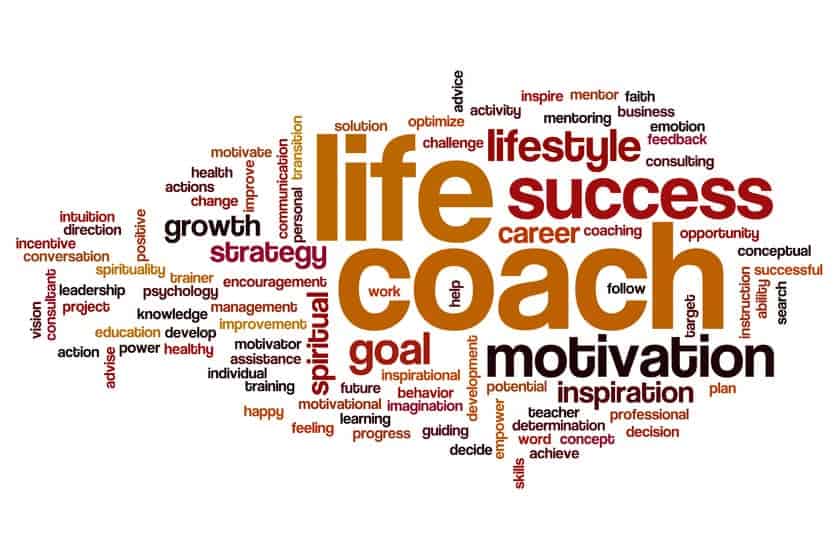Setting goals for the new year is nothing new. However, most of the time, the goals or resolutions we set at the beginning of the year seem to wain and fade quickly if we don’t have a clear focus and motivation for making these changes. An integral part of achieving success and creating lasting changes in your life is to set your sights on something better for your health and your life! If you take these 6 steps into account, you can set goals to help you reach your vision and achieve your desired outcome.
Taking these steps will help you get on track and stay there until you are living your vision of better health, relationships, work-life, etc.
Step 1
Start with the end in mind.
Resolutions are a great way to set goals and start fresh in the new year. It’s important to start with the end goal in mind while being realistic with your expectations.

Seek what you long for within your mind, heart, soul, and spirit. When thinking about a future picture of yourself, turn to your ideals and values for guidance. Even if it’s just a few minor adjustments you would like to make or something bigger and more sweeping, see this picture of yourself.
A small or large vision board can be helpful. If that’s too big of a task for you, consider the idea of writing down a few simple but descriptive words that help you to believe in your ability to makes the changes necessary. Lately, I’ve been using a mantra that I learned from Peloton classes: “I can do hard things.”
Once you have a vision in mind, start working on the smaller goals that will help you get closer to it. In your mind, see yourself living this vision and open your heart to experience what it would feel like.
Again, turn to your ideals and values for guidance as you contemplate your future. Doing so makes you more likely to access the motivation necessary and see your goals through.
Keep in mind that setting too high or unrealistic goals can lead to discouragement and giving up.
Step 2
Assess your motivation for manifesting this vision.
Setting goals is a crucial step in achieving success. But it takes work. In fact, it’s often difficult to know where to start. That’s why it’s vital to assess your motivation for wanting to achieve a goal. Start by asking yourself why this vision is important to you. When you can determine your “why”, you are able to attach meaning to the goal.

As you begin to create this future vision of yourself, see this vision as clearly as possible, but also consider the amount of motivation you have to make these goals happen. High motivation leads to higher success. Low motivation leads to aggravation and frustration and even throwing in the towel altogether.
This assessment involves determining what steps are involved and figuring out what effort and investment you will need to achieve your vision.
- Are you willing to put in the time and effort?
- Are you willing to make the necessary financial investment in yourself?
- What will achieving this goal allow you to feel, do, be, etc.?
Once you’ve answered these questions, it’s time to think about what you will do in order to make this vision a reality.
Step 3
Take a look around at your support system.

Resolutions can be tough, but sticking to them is crucial for success.
The best way to ensure that you hold fast to your resolution is by surrounding yourself with people who will support you and help you reach your goals.

National Board Certified Health & Wellness Coach
Accountability is an effective element to achieving your goals. If possible, find a friend who is willing to hold you accountable on a weekly basis. If possible, find a friend or family member who might also want to be held accountable to their goals. Then you can both work on the goals each of you set for yourselves, while supporting each other along the way.
If the idea of setting up an accountability system with a friend or family seems too complicated, consider the option of hiring a Life Coach, like me!
Most coaches are trained to help their clients achieve their vision. As a National Board Certified Health and Wellness Coach, I have programs that I use with my clients that lead to progress and success. When I start with a new client, I begin with an interview that leads to a Wellness Vision Statement. This statement has several parts to it which encompass the essential aspects of goal setting and achievement. My clients are always amazed at how powerful this Vision Statement is as they see themselves becoming what they set forth as their future vision of themselves. Hiring a coach can be a great way to get the extra support you need.

Another means of support is to take time weekly to reflect on your resolution and why you want it. Keeping a journal or even making notes about how this goal is affecting your overall sense of well-being can help you stay on track. “Notice what you notice” about making these changes. Keeping a journal also can help you see how you overcome challenges, and it allows you to document any great strides you make along the way. Journaling allows you to track your progress.

Step 4
Write down your long-term vision as clearly as possible.
Once you’ve set up your support system, begin to create a vision of yourself doing some activity as your future self.

Consider the example of wanting to play on the floor with your grandchild. In order to do this, it may require you to improve your flexibility and energy. This image of playing with your grandchild can be a powerful motivator for you. As you envision this image, experience in your body and mind what it would feel like to be playing energetically and having fun with the child.

The clearer the vision, the more likely it is to happen.
For gaining knowledge about flexibility and increasing energy, you might want to work with a trainer, schedule an appointment with a dietician, and/or seek out a supplement regimen that increases your energy. Have a strong, positive mindset with a clear vision and you’ll be on your way to making it happen!
Step 5
Write down 3-5 goals you can do each week to attain your vision.
There’s no doubt that setting short-term goals are one of the most critical steps in achieving success toward long-term goals.
First, start by writing down what you’d like to achieve. This action step will help you focus on the task at hand. Next, break your goals down into smaller, more manageable achievable steps. Finally, set a date by which you’ll reach each goal. Weekly goals are best because they create momentum and allow you to tweak your long-term goals over time.
Write down statements that begin with, “I will . . .” For example, “I will do a 15-minute stretching class 2 times a week”. Or “I will spend 1 hour this week reading about nutrition plans for increased energy.” Being specific keeps things simple and focused.
And last but not least, make sure to follow the SMART goals format. This format will help you keep track of your progress and measure your success with specific targets.

S=Specific
M=Measurable
A=Action-oriented
R=Realistic
T=Time-bound
Here are some tips for setting SMART goals:
- Be specific as it allows you to have more clarity about exactly what it is you will be doing.
- Set measurable goals that you can check off as you accomplish them.
- Set up goals that propel you into action such as taking classes or reading in order to gain knowledge.
- While it’s good to aim high, keep in mind any time or physical limitations you might have. (Your doctor can also tell you what limitations you should consider.)
- And finally, take into account the amount of time you want to spend working on your goals.
Step 6
Congratulate yourself on your achievements.
As you move through the short-term goals, it’s important to spend time reflecting on your achievements. If you can take even 5 minutes a week to look back on what you were able to accomplish, you’ll feel a sense of gratification and this will help keep you motivated and moving forward.
Consider small rewards for yourself as you achieve each milestone along the way. This gratitude will keep the momentum going and also help you to stay on track!
Regardless of how small or large your achievements are, it’s critical to feel grateful to yourself for each one. Gratitude generates good feelings and the more you can associate good feelings with achieving goals, the more likely you are to continue on your vision quest.

Gratitude can also give you peace of mind and the confidence to move ahead toward your long-term goals.
A Final Word
Setting goals for the new year is always a good idea, but you don’t have to wait until January 1st to start. Any time of year is a good time to make changes toward better health and well-being. But if New Year’s resolutions fire you up for change, then go for it!

Thanks for reading, and I hope you have a successful year!
Of course, always remember that as a National Board Certified Health and Wellness Coach, I am here to help you along the way!
